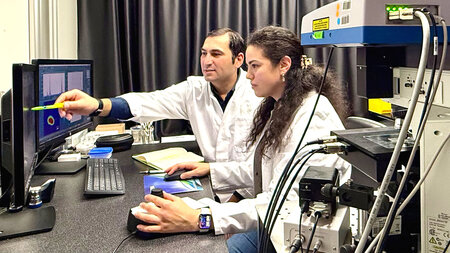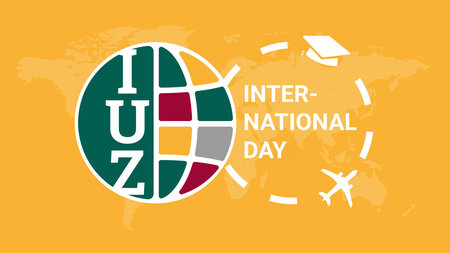Textile Flood Protection increases Safety
Scientists of the research area Lightweight Constructions in Civil Engineering present a novel temporary system for flood protection on construction fairs in Chemnitz and Dresden in February and March
-

The flood protection system with a temporary retaining wall has been extensively tested during its d
The latest floods show that the natural retention potential of shore areas is quickly exhausted and neighboring settlement areas are threatened. Permanently constructed dam systems are not sufficient enough. Thus, Scientists of the research area Lightweight Constructions in Civil Engineering of the Department of Lightweight Structures and Polymer Technology at the Chemnitz University of Technology and partners from the economy jointly developed a temporary system after the idea of architect Stev Bringmann. The system can be installed quickly and with low personnel expenses, has low acquisition costs, is easy to store and has a high durability. The textile flood protection will be exhibited on the construction fair in Chemnitz in the special display of ‘’Safety around the House’’ (Hanger 1/Booth 5) from February 3rd till 5th, 2017. A month later, from March 2nd till 5th, 2017, the researchers will present their innovation on the trade fair HAUS in Dresden. At the largest regional construction fair in Germany they give advice in a special display focusing on ‘’Personal Provision in Flood Protection’’.
The system is comprised of a foundation, supports and a textile membrane. It can be installed on the banks of standing or flowing bodies of water and can easily be deployed when necessary. The foundation is shaped like a trough and also serves as storage for the system. When the system is not in use, the supports cover the trough. During use, they hold the textile membrane which ultimately provides protection against the water. Researchers in Chemnitz were responsible for simulations of currents and mechanics, tests in the flow channel, developing the supports, construction of the anchor system and material testing of the membrane, supports and anchoring.
“What makes this system so unique is the dissipation of the forces that act on the structural components during a flood,” says Dr. Sandra Gelbrich, leader of the research area “Lightweight Constructions in Civil Engineering”, and explains: “In many of the existing temporary retaining wall systems, the water pressure results in high bending moments which particularly affect the foundation and supports. Total effort and expenditure on construction and materials is correspondingly high in systems of this kind. The advantage of this new system is based on avoiding these bending moments.” Chemnitz scientists have developed a solution in the form of a flexible membrane that does not allow much stretching, made of textile-reinforced PVC. It takes shape under water pressure and reacts only with tensile stress. The force is dissipated via the membrane’s anchoring in the ground as well as membrane edge reinforcement in the supports.
Even when debris collides with the system, the strain on the supports remains mostly unaffected. “Therefore, supports can be built extremely slim and light,” explains Gelbrich. The developers achieved this using a special geometry of the membrane and a precise arrangement of the structural components. The construction can tolerate a water level of 1.5 meters. It can withstand debris collisions up to 400 kilograms – tested with an impact angle of 90 degrees to the direction of the current and at a speed of 4 meters per second. “Thanks to the lightweight design, it is possible for just two people to construct hundreds of meters of flood protection,” Gelbrich points out.
Now the flood protection system is put into practice: The distribution of the ‘’FloodTEX’’ system and the project planning are provided by the TU-partner HWS-Konzept UG (Glauchau) and the engineering firm Schülze & Rank.
More information is available from Dr. Sandra Gelbrich, Leader of the research area “Lightweight Constructions in Civil Engineering”, phone +49 371 531-32192, e-mail sandra.gelbrich@mb.tu-chemnitz.de and Rajko Berger, phone +49 371 531-38978, e-mail rajko.berger@mb.tu-chemnitz.de
( Author: Mario Steinebach, Translation: Alissa Hölzel/Sarah Wilson)
Matthias Fejes
01.02.2017




